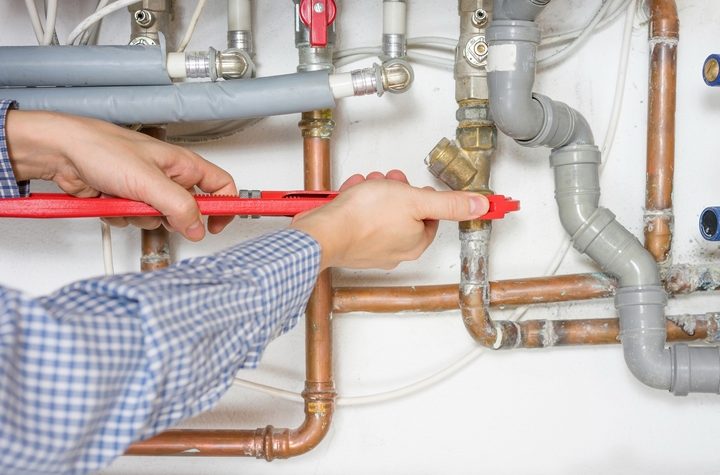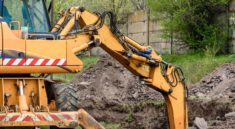Although the principles by which your home’s plumbing system operate are pretty simple to follow, identifying the plumbing parts and accessories apart can be a bit trickier. Unless you are a knowledgeable plumber, you are unlikely to know most of these components and what functions they may serve.
When it comes to the logistics, fresh water comes in under pressure to fixtures such as sinks, bathtubs, showers and toilet tanks and wastewater is expelled from the home through drainpipes and from there into the sewer or septic system. There are also components called vent stacks that help the water and sewer gases drain outside.
Of course, in order to keep everything running smoothly, the right kind of plumbing fittings need to be in place. Here are twelve of the most commonly used plumbing accessories and materials:
1. Adaptor

Adaptors are used anytime two different types of pipes need to be connected to one another. Due to the fact that pipes can be either male or females, an adaptor can be used to adjust adjoining pipes accordingly. Used for both PVC and copper piping, adaptors can have threaded or non-threaded ends that can then be welded, soldered or glued to the pipe.
2. Barb

Used to connect hoses to pipes, barbs usually have one male end and one that is a ridged and tapered cone. Depending on whether they are designed to carry cold or hot water, barbs are made from plastic or brass accordingly.
3. Coupling

Facilitating the connection of two pipes that share a similar diameter, couplings are often used to repair a pipe that has broken or is leaking. They come in a standard, compression or slip variety that serve slightly different purposes. Compression fitting are connected between two pipes via rubber seals or gaskets on both sides which prevents leaking. Slip couplings, on the other hand, includes two pipes and be adjusted to repair a specific length of damaged pipe.
4. Cross

These plumbing accessories are able to connect four pipes, cross fittings come with three inlets and an outlet or three outlets and an inlet. Due to the higher amount of stress they need to endure, cross pipes are typically built from stronger material.
5. Elbow

As you may have guessed from the name, this type of fitting resembles an important arm joint. Elbows come in several kinds of degrees and help the flow of water change direction. Although elbow fittings can be made of different materials, most are female.
6. Mechanical Sleeve

These nifty plumbing accessories make fitting easy to install by connecting two pipes through the use of a screw or other device. Usually made of rubber that is then inserted inside a metal jacket, or stainless-steel clamp, the clamp is then tightened and compresses the rubber inside to make a tight seal.
7. Nipple

A super short fitting, these plumbing accessories can be made of copper, brass or steel or chlorinated polyvinyl chloride (CPVC). Serving to connect two fittings, they come in varying lengths.
8. Reducer

These specialized fittings are designed to reduce flow and come in concentric or eccentric varieties. A concentric reducer is intended to join two pipes on the same axis, while an eccentric reducer is used to join pipes of different diameters.
9. Tee

Shaped like its namesake letter, a tee has both an inlet and outlet. Due to the fact that they have three instead of four openings, they are considered sturdier than the cross fitting. Sometimes used as a diverter, they are marked with directional indications and need to be installed correctly for the system to operate.
10. Union

Similar to couplings, unions are easier to remove and are therefore very convenient for maintenance or a planned future replacement. These plumbing accessories contain three parts, nut, male end, and female end. The nut is used to join the male and female ends.
11. Valve

Working to control the flow of fluids, valves come in a variety of different types, including throttling, non-return and isolation. Non-return valves only allow the liquid to flow in one direction and are often found in drains. Isolation valves, alternatively, have the capacity to block off a part of the overall system so that a different part can be serviced or maintained.
When work is not being done, these kinds of valves are always left open or closed. As a result of the fact that they aren’t moving regularly, it is wise to check in from time to time to ensure functionality. Finally, throttling valves control the pressure and amount of a fluid, which may cause a lot of stress as a result. For this reason, they tend to wear out quickly.
12. Wye

Resembling the structure of the letter ‘Y,’ these specific fittings are able to connect three pipes and allow them to branch out into freshwater lines or drains. Their function is largely similar to that of tee fittings, but thanks to the fact that they tend to hand smoother angling, there is less friction generated in the flow of water.




